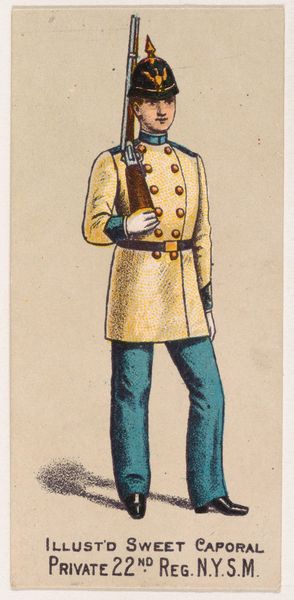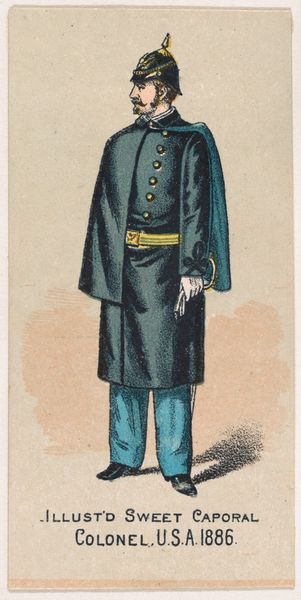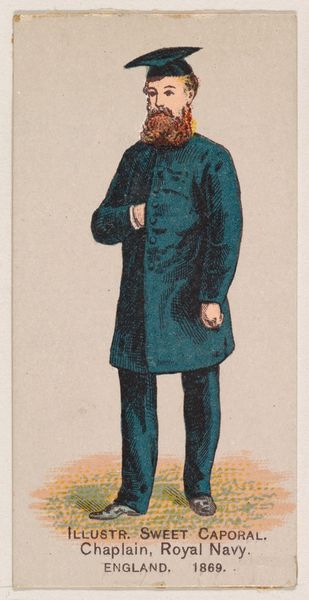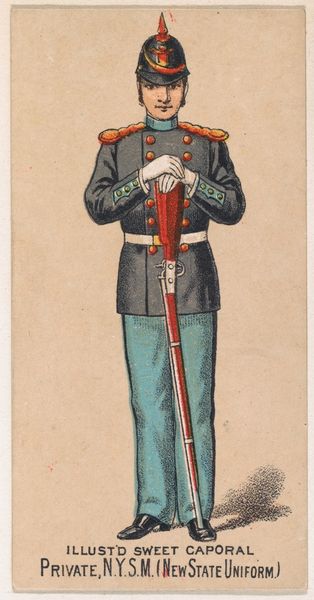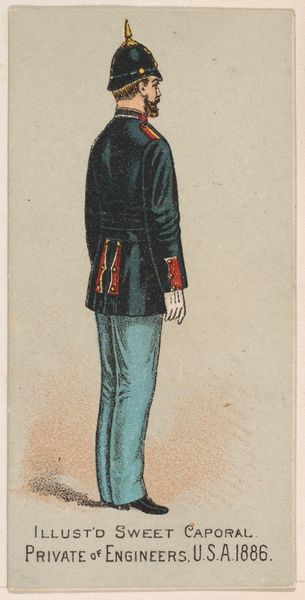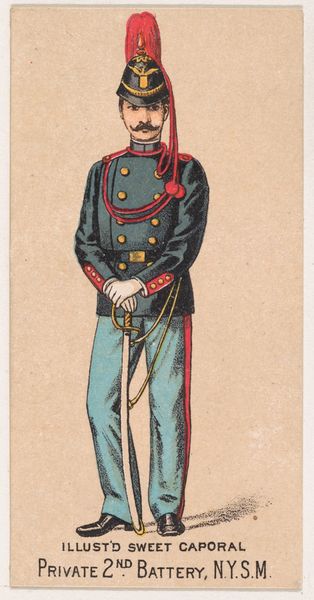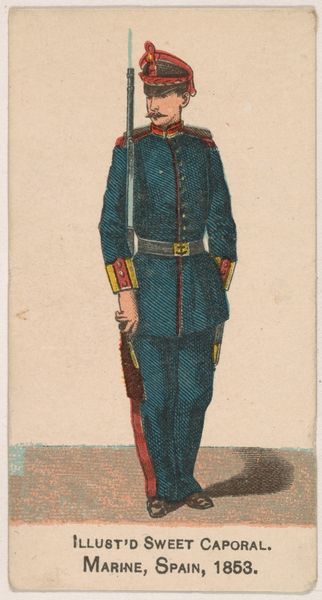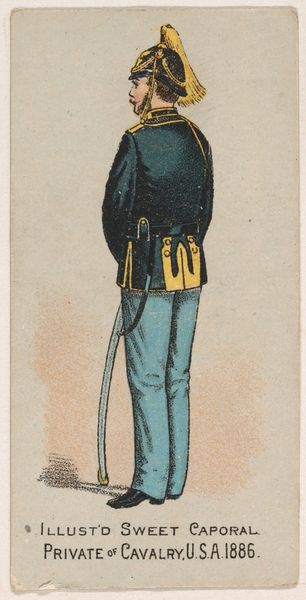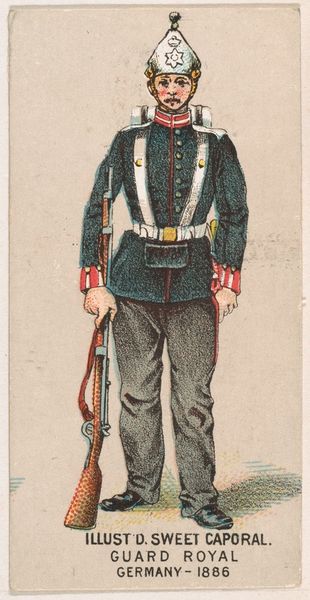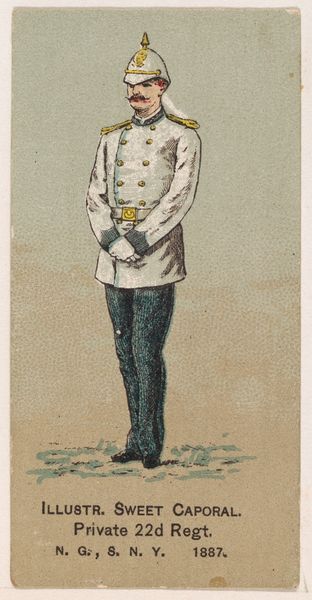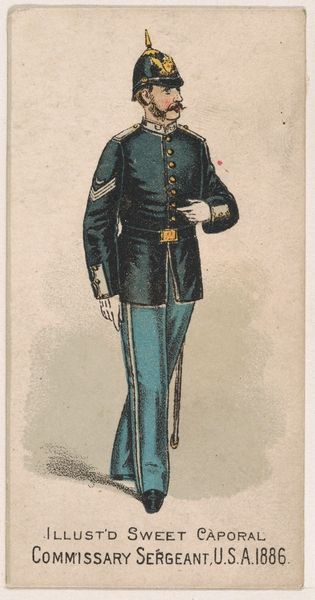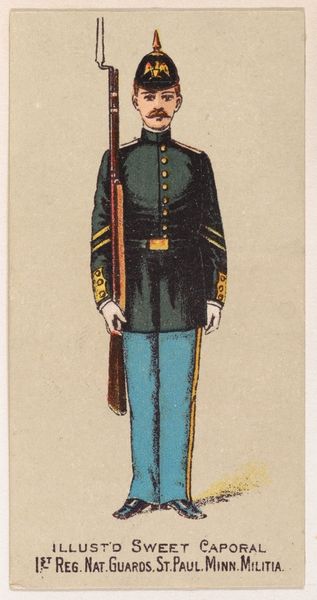
Private, 13th Regiment, New York State Militia, from the Military Series (N224) issued by Kinney Tobacco Company to promote Sweet Caporal Cigarettes 1888
0:00
0:00
drawing, print
#
portrait
#
drawing
# print
#
figuration
#
soldier
#
genre-painting
#
history-painting
#
academic-art
Dimensions: Sheet: 2 3/4 × 1 1/2 in. (7 × 3.8 cm)
Copyright: Public Domain
Editor: Here we have "Private, 13th Regiment, New York State Militia," a print from 1888, created by the Kinney Tobacco Company. He looks quite serious, standing at attention. I’m struck by the uniform; the color seems a little unusual for a military uniform. What do you make of this portrait? Curator: I'm immediately drawn to the context of its creation. It's not just a portrait, it's an advertisement embedded in a series about the military, meant to promote Sweet Caporal cigarettes. Consider the rise of industrial capitalism and the emerging consumer culture of the late 19th century. How are notions of masculinity, patriotism, and consumerism being intertwined here to sell tobacco? Editor: So you’re saying the image is about more than just depicting a soldier? Curator: Exactly. Think about who this image targets. Cigarette companies often associated their products with strength, virility, and adventure. Military imagery served to reinforce these associations, linking smoking to ideas of national pride and duty. How might this messaging impact recruitment or perceptions of military service? Editor: I hadn't considered the implications beyond the surface level. I suppose it glorifies the military through this idealized image of a soldier, while simultaneously working as advertisement. Curator: It's a visual manifestation of power structures at play. Moreover, we must consider the absence of diverse representation within this historical record. The promotion of idealized masculine figures and military service may also be inadvertently upholding harmful norms. Where are the images that challenge these stereotypes? What alternative narratives are silenced? Editor: This really shifts my understanding of the piece. It's not just a portrait, it's a piece of propaganda within a broader cultural narrative. Curator: Precisely. By examining art through an intersectional lens, we can expose these power dynamics and better understand their impact on society, both then and now.
Comments
No comments
Be the first to comment and join the conversation on the ultimate creative platform.
